The Japanese design philosophy of Wabi-sabi, which celebrates aging as a natural process and explores beauty in impermanence and imperfection, inspires the incorporation of elements into your home decor. As you do so, an ideal organic aura for relaxation is cultivated; this aspect forms the focus of our discussion here. With this article, our aim is to delve into integrating modern wabi-sabi design within your living spaces.
What is Wabi-Sabi Interior Design
By embracing natural materials and shapes, wabi-sabi interiors incorporate flaws into their design; indeed, they celebrate the imperfections that aging introduces. The following principles define the wabi-sabi style predominantly:
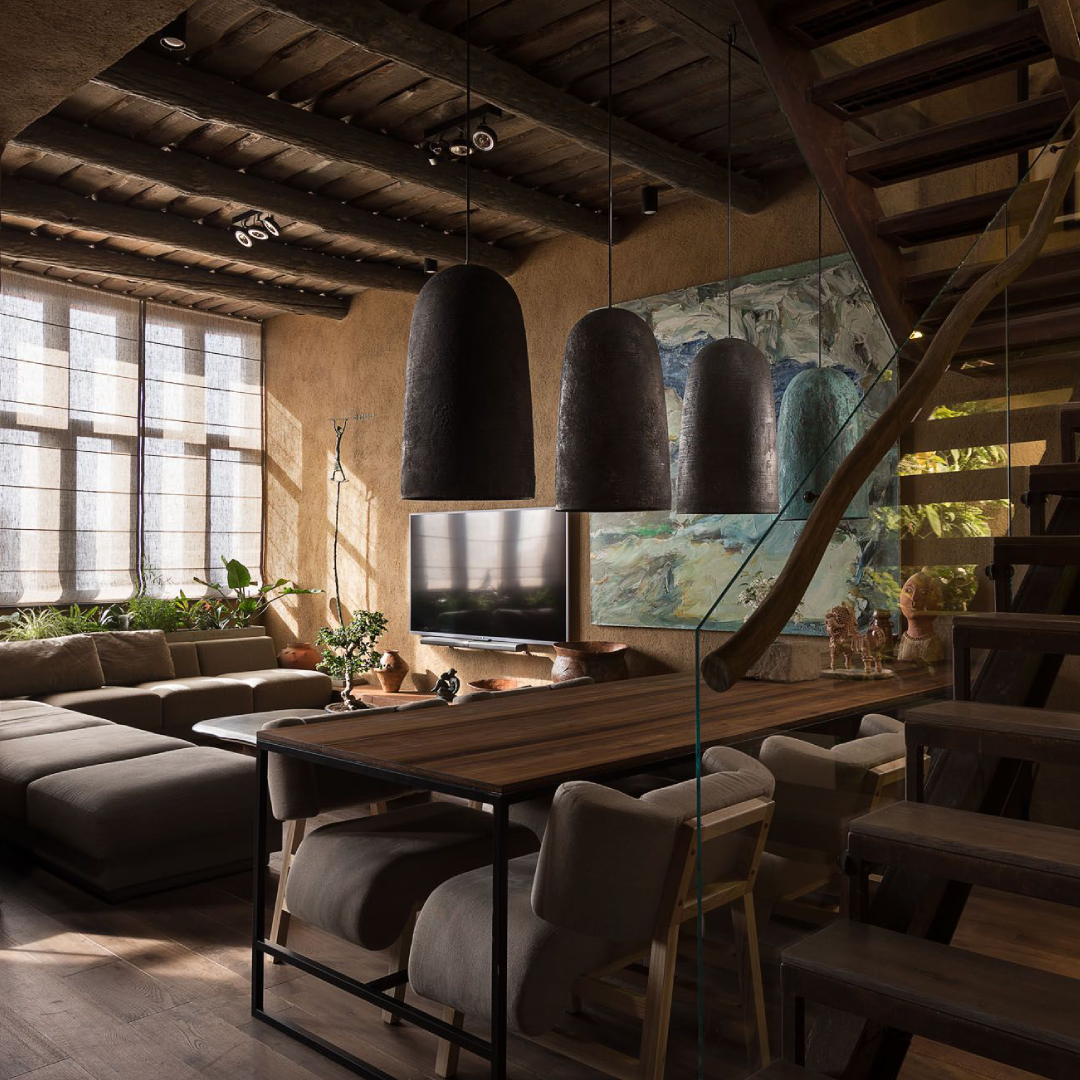
- transience of all phenomena: everything evolves and eventually ceases to exist. In this context, appreciating ephemeral beauty becomes paramount; it encapsulates a profound recognition – an acknowledgment that all forms are temporary yet capable of radiance. This philosophy permeates all aspects of Wabi-sabi design principles.
- Focus on authenticity: employ simple forms with natural materials rather than synthetic ones masquerading as natural.
- Imperfections are welcomed: We honor imperfections by appreciating flaws, which serve as reminders of natural processes; we do not conceal them.
Through the incorporation of elements such as stone, wood, clay, paper screens, and plant life, wabi-sabi design invites nature indoors. It engenders an environment–warm and tranquil–that echoes the serenity found in natural landscapes. A lovingly worn leather chair or a faded antique rug: these are emblematic of the character that natural aging bestows–a peaceful, lived-in essence. Similarly, rooms acquire a certain charm; they embody this attribute through time and use.
Elements of Wabi-Sabi Design for the Home
Several key wabi-sabi decor elements have the potential to infuse any living space with this zen style:
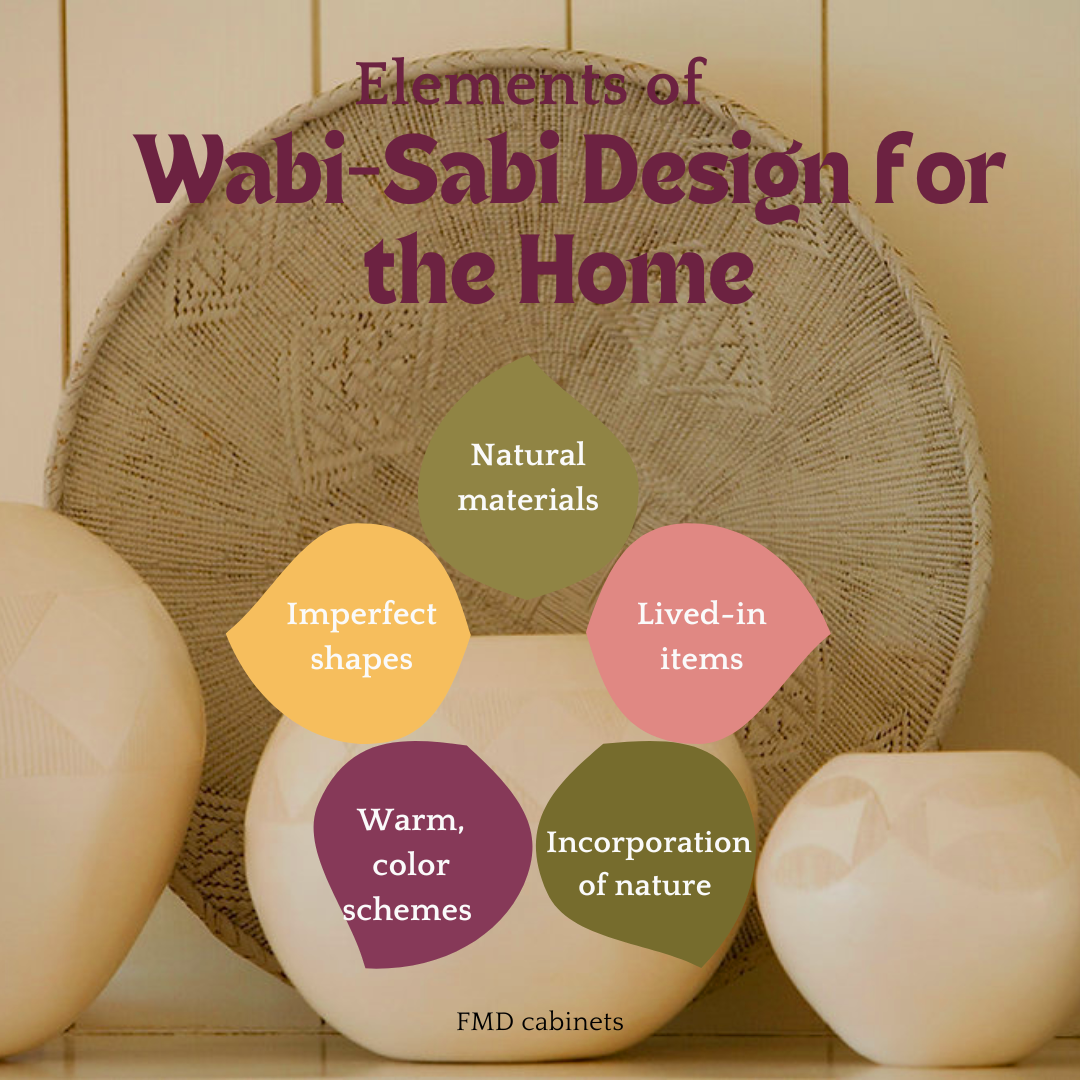
- Natural materials – wood, stone, clay, fiber, paper, rattan.
- “Lived-in” patinas – marks, cracks, and stains suggesting a long history.
- Imperfect shapes – asymmetry, irregular forms.
- Warm, earthy color schemes – neutral, organic palette.
- Incorporation of nature – plants, light, views.
By blending organic elements into sleek, contemporary spaces, wabi-sabi design achieves a seamless integration of nature and minimalism. The interplay between perishable materials and eternal concepts of beauty and craftsmanship yields a style that is both ancient and modern; this, indeed, represents the result.
Creating a Modern Wabi-Sabi Style Home
Follow these basic Home decor to effortlessly transform your home into an authentically wabi-sabi space, evoking a sense of tranquility and lived-in charm:
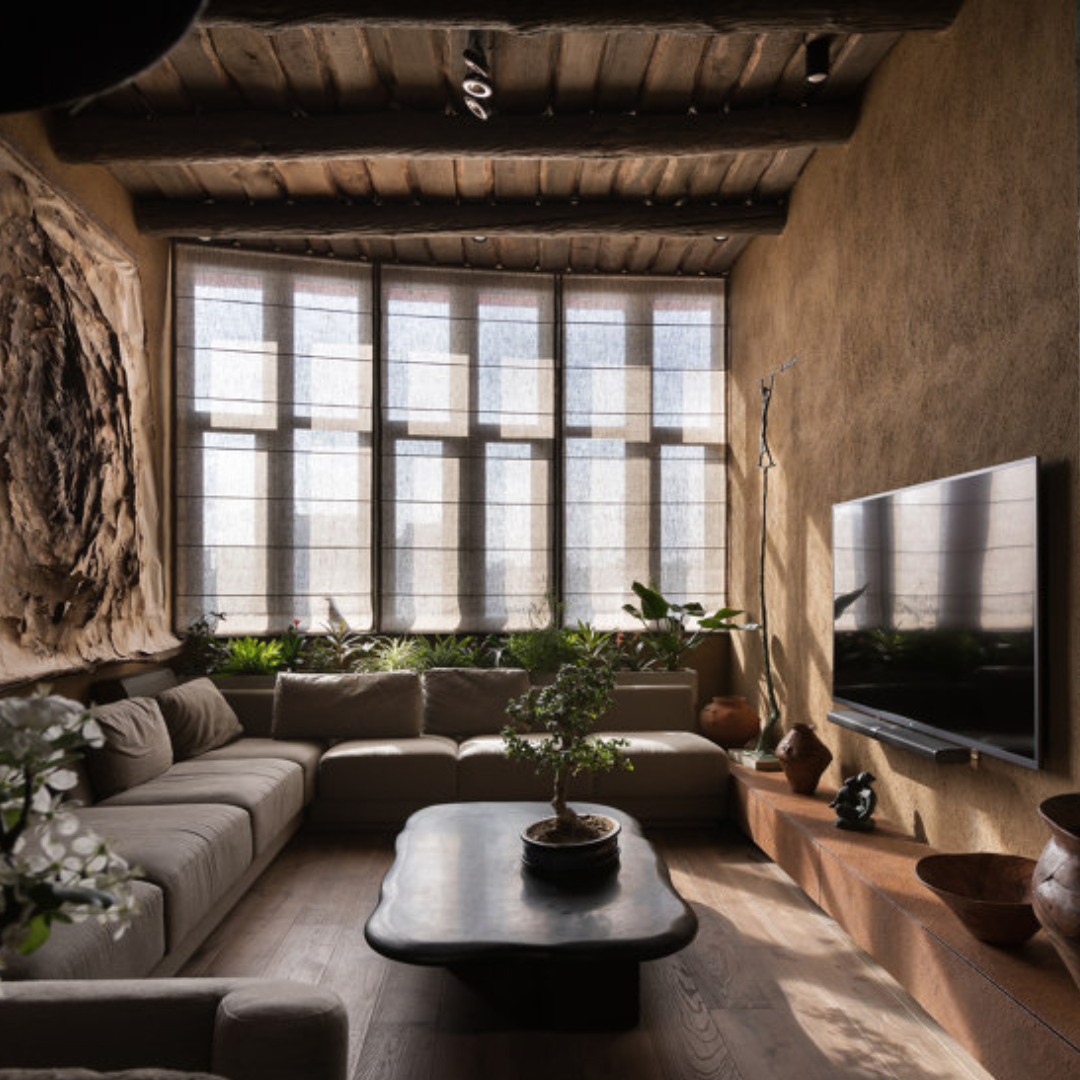
- For a balanced minimalism, integrate natural and tactile surfaces such as wood or stone with sleek finishes like concrete.
- Choose furniture and decor that showcase natural imperfections through visible wear, cracks, or irregular shapes.
- Accent your neutral, earthen color palettes with greens and blues derived from foliage and ceramics.
- To establish a connection between the indoor and outdoor environments, one should consider incorporating living greenery such as bonsai trees, potted ferns, or eucalyptus.
- Spotlight the passage of time by allowing patinas to evolve on surfaces.
- Craft cozy places for introspection, like window nooks with pillows.
Key Wabi-Sabi Furniture Pieces for the Home
Wabi-sabi furniture choices help strengthen the aura of natural authenticity within rooms. Some pieces well-suited for this style include:
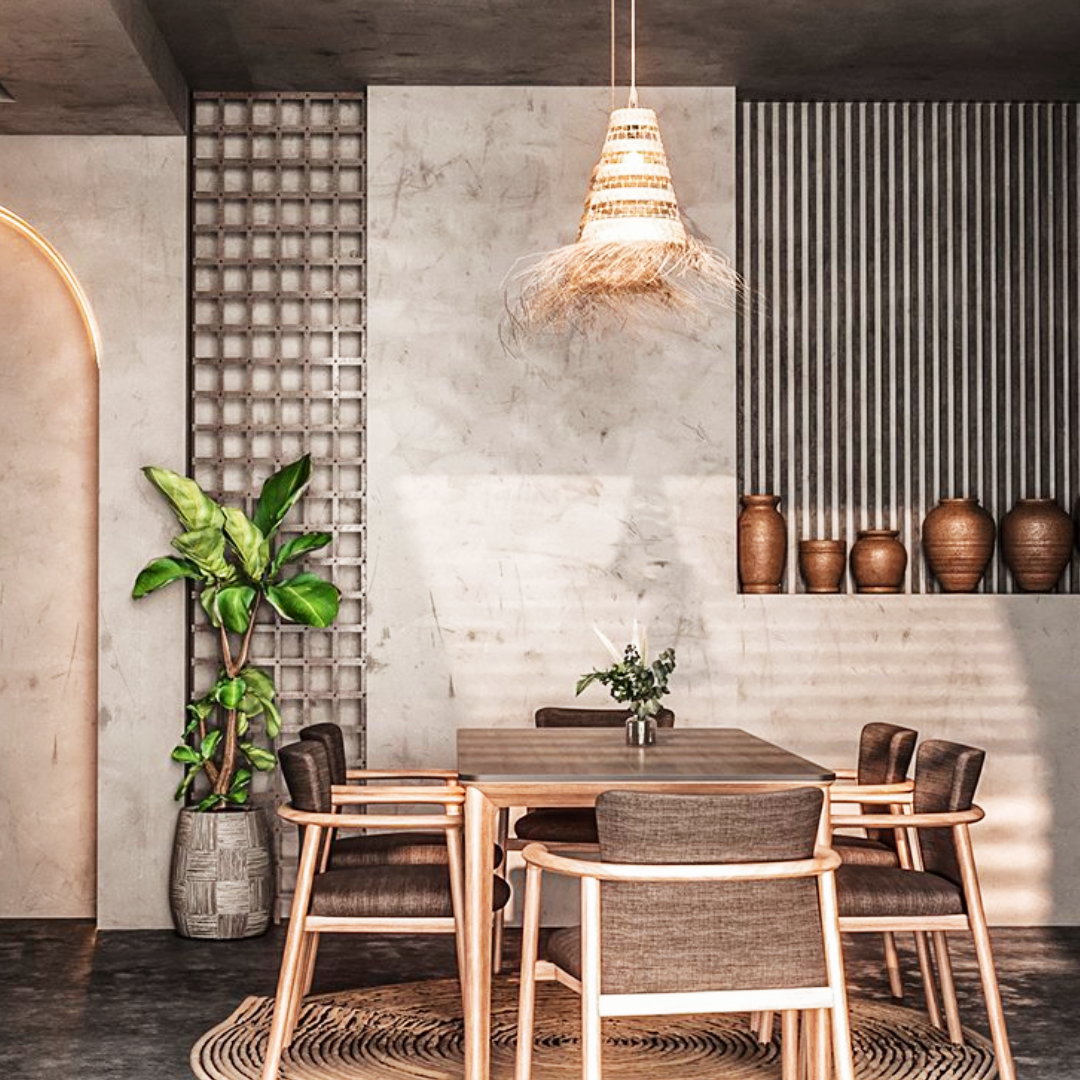
- Wood tables: Handcrafted, unpainted wood dining tables or side tables with visible grains, cracks, and markings from use over time.
- Stone bathtubs or bathroom vanities: Soaking tubs or bathroom vanities made from natural hinoki cypress wood or Japanese ofuro tubs carved from granite or porcelain.
- Bamboo furnishings: Bamboo used in wall screens, window shades, shelves, or headboards adds warmth.
- Handmade ceramics: Imperfectly shaped mugs, vases, plates, and tea bowls reflect wabi-sabi ideals with irregular glazes.
- Natural fiber rugs: Jute fiber or braided rag rugs in organic shades add age naturally.
- Tree branch hooks: Tree branches hung on walls to hold coats, keys, or towels incorporate nature.
This timeworn yet contemporary furniture helps transform living spaces into calming retreats. Their textures create cohesiveness in lieu of color to allow the materials’ natural elegance to shine through.
Find the best bay area cabinetry makers here!
Wabi-Sabi Design Principles
Wabi-sabi’s attention to physical details in life connects back to core Zen Buddhist principles of accepting constant change as part of nature’s rhythm.
Main Principles
- Acceptance of transience – appreciating the ephemeral nature of life
- Appreciation of simplicity – finding beauty in plain materials vs ornate decor
- Focus on authenticity – using organic, natural materials aged naturally over time
By emphasizing these facets of existence across the home’s decor, inhabitants can align perspectives for mindfulness.
Creating a Wabi-Sabi Bedroom Retreat
Although there is tons of Bedroom interior design styles below are some aspects that ensures you to choose wabi sabi style! The bedroom presents ample opportunities to craft a relaxing wabi-sabi environment. Concentrate on aspects like:
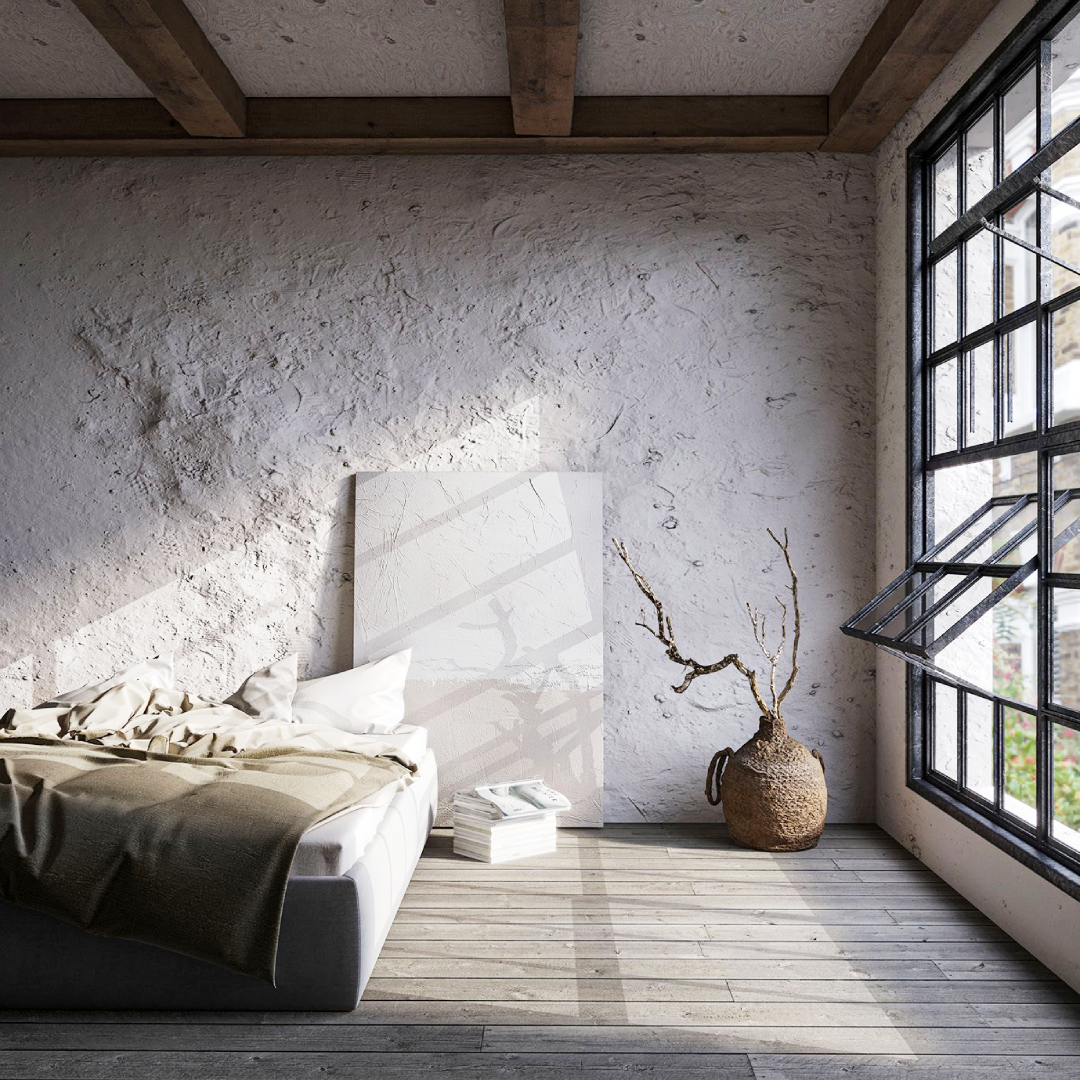
Natural Materials: Use renewable materials with visible grains or knots like bamboo, linen, rattan, and unfinished wood to spotlight natural imperfections.
Asymmetric Details: Add panels, shelves, windows, or alcoves in slightly irregular shapes and unbalanced positions to embrace asymmetry.
Neutral Color Schemes: Monochromatic, earthy palettes allow the raw textures of the materials to shine as focal points. Layer neutral bedding and window treatments to create cohesion.
Nature Views: Connect interiors to exterior environs through panoramas of gardens, forests, or the sky. Frame views using semi-transparent screens and trimmed windows.
Designing a Wabi-Sabi Living Room: The living area presents abundant opportunities for showcasing wabi-sabi principles:
Cozy Floor Seating: Use tatami mats, untreated wood plank flooring, or woven wool rugs to delineate relaxing spaces conducive to floor seating.
Asymmetrical Shelving: Add custom wood shelving in alcoves or corners to display cherished items. Use irregular off-kilter shapes to amplify asymmetry.
Natural Color Schemes: Balanced earthen hues like beige, brown, and green emulate shades found in nature to soothe the senses. Incorporate light to accentuate depth and textures.
Organic Textures: Natural fibers in baskets, wall hangings, and accents complement wood grains visible in furniture. Show signs of use to reflect transience.
Crafting a Wabi-Sabi Bathroom: For a contemplative retreat, craft wabi-sabi bathroom accents using principles like:
Natural Materials: Hinoki cypress wood, unfinished oak or bamboo suits shower floors, vanities, and bathtubs. Add stone and clay accents to complement.
Imperfect Textures: Choose vessels, tiles, and mirrors with slight distortions and irregularities to spotlight flaws as beauty.
Asymmetric Design: Imbalance wooden frames, window positions, or alcoves to boost visual interest and embrace authenticity.
Timeworn Elements: Repurposed antiques like worn storage chests or craftsman age-old granite carved sinks add nostalgic charm.
By spotlighting the imperfect and ephemeral across living spaces, wabi-sabi’s holistic perspective shifts inhabitant mindfulness toward the transient gift of simplicity. This presence grounds spaces with humble elegance; time cannot erode, only enhance.
Mixing Wabi-Sabi With Other Decor Styles
While zen-inspired wabi-sabi spaces keep things simple, you can blend this natural style with others for added interest. effective pairings include:
Midcentury Modern: Wabi-sabi’s use of raw, tactile textures balances sleek lines and muted palettes in midcentury interiors. Weave in wood, paper, and clay accents.
Bohemian Decor: Boho’s global eclecticism, rich textures, and multiplicity of cultures intersect with wabi-sabi’s handmade artistry. Incorporate woven wall hangings with varied collected items.
Scandinavian Design: Scandinavian simplicity and love of natural materials complements wabi-sabi as well. Mix airy white walls with organic slatted wood and ceramic accents.
Thoughtfully combining wabi-sabi with other styles adds depth and expands possibilities for intriguing fusion spaces.
What is the difference between wabi-sabi and Japandi design
Wabi-sabi is a Japanese philosophy celebrating imperfection and simplicity. japandi design blends Japanese and Scandinavian principles for a clean, functional, and warm aesthetic. Wabi-sabi is a broader mindset, while Japandi is a specific trend emphasizing balance and harmony in interiors.
What is Japandi style kitchen? read more!
Adding Wabi-Sabi Appeal to Small Spaces
While wabi-sabi’s use of natural materials works well in larger homes, you can also embrace its ideals in modest apartments or tight spaces by:

Using Multipurpose Furniture: Tables with fold-down leaves, portable shoji screens, and stacking stools maximize flexibility.
Spotlighting Textures: Add interest through weaving, wood grains, and knits since colors are more neutral.
Dedicating Contemplation Zones: Define specific areas for relaxation, like window benches or floor cushions, since separate rooms are limited.
Reflecting Nature: Feature potted plants, small water features, framed landscape photos, and natural light to connect with nature.
With creative solutions, wabi-sabi’s tranquility enhances studio living, too.
Achieving Easy Wabi-Sabi Style on a Budget
This organic style doesn’t have to break the bank. Follow these budget-friendly ideas:
- Source Vintage Finds: Shop secondhand and antique stores for worn-in character pieces full of imperfections that reflect the wabi-sabi style.
- Use Multifunctional Furnishings: Tables with folding leaves and stools that function as side tables maximize usefulness affordably.
- Refurbish Furniture: Give castoff furniture new life through simple repairs, paint removal, sanding, or discoloring techniques to reveal wood’s aging beauty.
- Display Found Objects: Pick up interesting rocks, shells, driftwood, or fallen branches on walks to style as sculptural accents.
With resourceful thinking, anyone can craft an authentic feeling wabi-sabi abode, focusing funds on a few key furnishings while enhancing them beautifully with found or nature-inspired items.
KEYWORDS:
